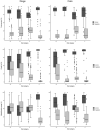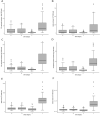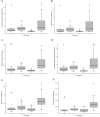Environmental impact of diets for dogs and cats
- PMID: 36396966
- PMCID: PMC9672041
- DOI: 10.1038/s41598-022-22631-0
Environmental impact of diets for dogs and cats
Abstract
Food production is responsible for almost one-quarter of the environmental impact and, therefore, its importance regarding sustainability should not be overlooked. The companion animal population is increasing, and an important part of pet food is composed of ingredients that have a high environmental impact. This study aimed to evaluate the impact of dry, wet, and homemade pet diets on greenhouse gas emission, land use, acidifying emission, eutrophying emissions, freshwater withdrawals, and stress-weighted water use. The wet diets were responsible for the highest impact, and dry diets were the type of diet that least impacted the environment, with a positive correlation between the metabolizable energy provided by animal ingredients and the environmental impact. It is necessary to consider the environmental impact of pet food since it is significant, and the population of pets tends to increase.
© 2022. The Author(s).
Conflict of interest statement
Dr. Brunetto's Pet Nutrology Research Center has been funded by Grandfood industry and Commerce (PremieR pet), and Dr. Teixeira and MSc Pedrinelli are both part of the research group. Dr Queiroz declares no potential conflict of interest.
Figures







References
-
- Charles N, Davies CA. My family and other animals: Pets as kin. Sociol. Res. Online. 2008;13:1–14. doi: 10.5153/sro.1798. - DOI
-
- IBGE. Pesquisa Nacional de Saúde 2013: Acesso e Utilização dos Serviços de Saúde, Acidentes e Violências. Pesquisa de Orçamentos Familiares 2008–2009 (IBGE, 2015).
-
- Pet Secure. A Guide to Worldwide Pet Ownership. https://www.petsecure.com.au/pet-care/a-guide-to-worldwide-pet-ownership/ (2019).
-
- American Veterinary Medical Association . AVMA Pet Ownership and Demographics Sourcebook. AVMA; 2018.
Publication types
MeSH terms
LinkOut - more resources
Full Text Sources
Miscellaneous

